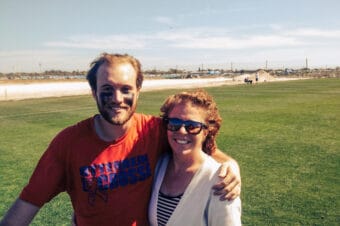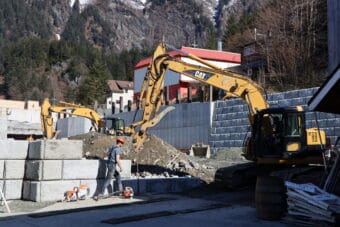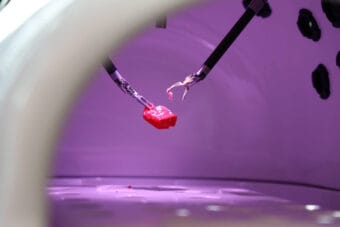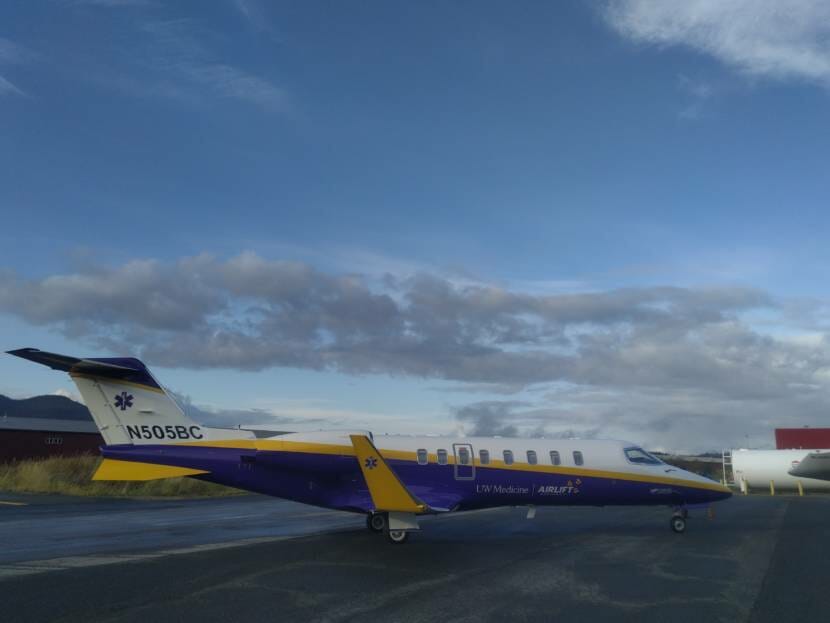
Medevac pilot Sam Steensland’s office is a Lear Jet 45XR, with two engines generating a combined 7,000 pounds of thrust.
“It’s just as fast as our old jet but it carries a lot more fuel,” he said during a recent demonstration at Juneau International Airport. “The nurses have a lot more room in the back to work. The avionics up front are a lot nicer. So I’d say just about everything about it’s a lot nicer.”
Airlift Northwest’s newest aircraft replaces a slightly smaller Lear Jet 31. Small business jets like these were developed to convey jet-set types between countries. But in Southeast Alaska, working folk also use them to catch a rides to larger hospitals, usually in Anchorage or Seattle.
From its Juneau base it plies the skies of Southeast Alaska
The new plane, based in Juneau, can transport passengers from most communities that have long enough runways.
“We can get into just about all of them in Southeast,” he said. “Except we can’t do Skagway or Hoonah in the jet. And that’s why we have our turboprop can do those.”
Airlift Northwest has a Pilatus PC-12. Other carriers fly the Beechcraft King Air 200. Both can fly lower and slower but are more susceptible to the elements.
There are also some situations where planes can’t land at all: Angoon on Admiralty Island doesn’t have an airport.
In some cases — like a patient on a fishing boat or a hunter in the wilderness — a Coast Guard rescue helicopter may be dispatched from Sitka or Kodiak for a “wing-to-wing” transfer to the medevac plane.
“The Coast Guard helicopter will actually land right beside our plane,” Steensland said. “We’ll transport the patient onto our plane and off we go to wherever they need to get to.”
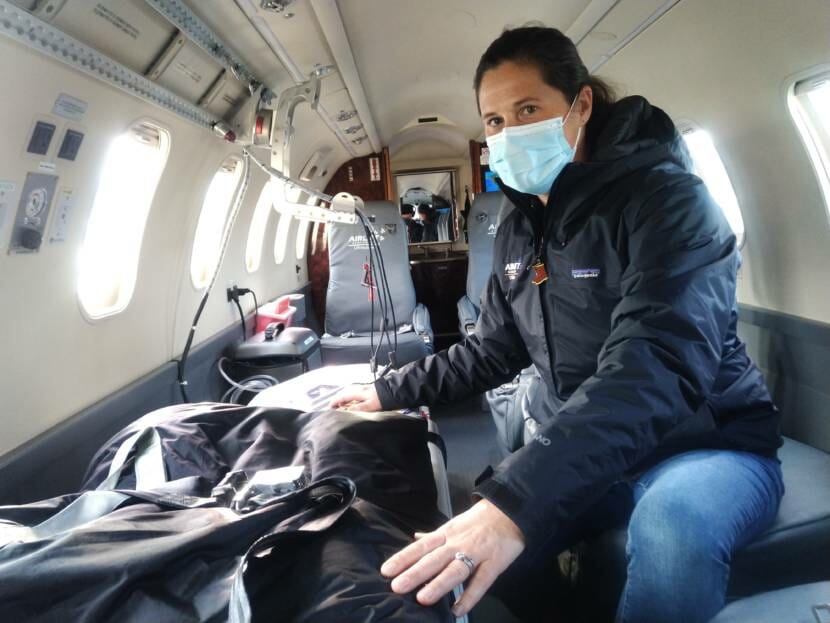
Inside the Lear Jet’s cabin, there’s a long stretcher where an injured or ill patient is secured.
There are seats for the two flight nurses and even extra space for up to three family members, says Elise Blasco, the Juneau Base Manager for Airlift Northwest.
“We are a flying ICU, so everything that you’re going to find in an ICU, we’re going to have the capabilities to initiate or continue in this aircraft as well,” she said.
The aircraft is equipped with medications, plasma units for patients that need blood and monitors designed for intensive care use.
There are a number of protocols for flying patients that have COVID-19. She says the pandemic has made it challenging at times for patients to be transported because of dwindling space in hospital critical care units.
“There is very limited availability for — especially ICU beds — right now in the state of Alaska,” she said.
A more comfortable cabin in a crisis
Stabilizing patients is essential because a flight between Juneau and Seattle can take more than two hours while cruising at around 500 mph.
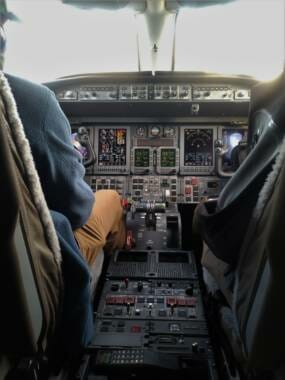
Diana Paul is a flight nurse who says the newest jet is an upgrade for everyone on board compared to the smaller jet.
“Before it was pretty tight, and they’d feel a little claustrophobic,” she said. “So this is really a lot more comfortable for the patients.”
Insurance may not cover the full cost of a medevac
Airlift Northwest charges by the mile, and a flight to Seattle can cost around $100,000. An 80-minute trip up to Anchorage is at least $70,000.
Providers bill insurance companies first. But patients sometimes find their insurer won’t pay the full amount, says Shelly Deering, the regional manager who oversees billing.
“I cannot emphasize enough that it’s really important for Alaskans, to look at what their insurance covers for medevac to make sure that they are covered,” Deering said.
Airlift Northwest is a nonprofit that’s an arm of the University of Washington. But it still charges competitive rates in line with the other two medevac providers that are for-profit enterprises.
All three medevac providers offer an annual membership plans, which are not reciprocated. That means a household would need to buy all three to be guaranteed that they won’t receive a bill.
Deering says people sometimes sign up for Airlift Northwest’s membership plan from a hospital bed while waiting to fly out.
“But you have to be awake or have someone as an advocate who can do that for you,” she said.

